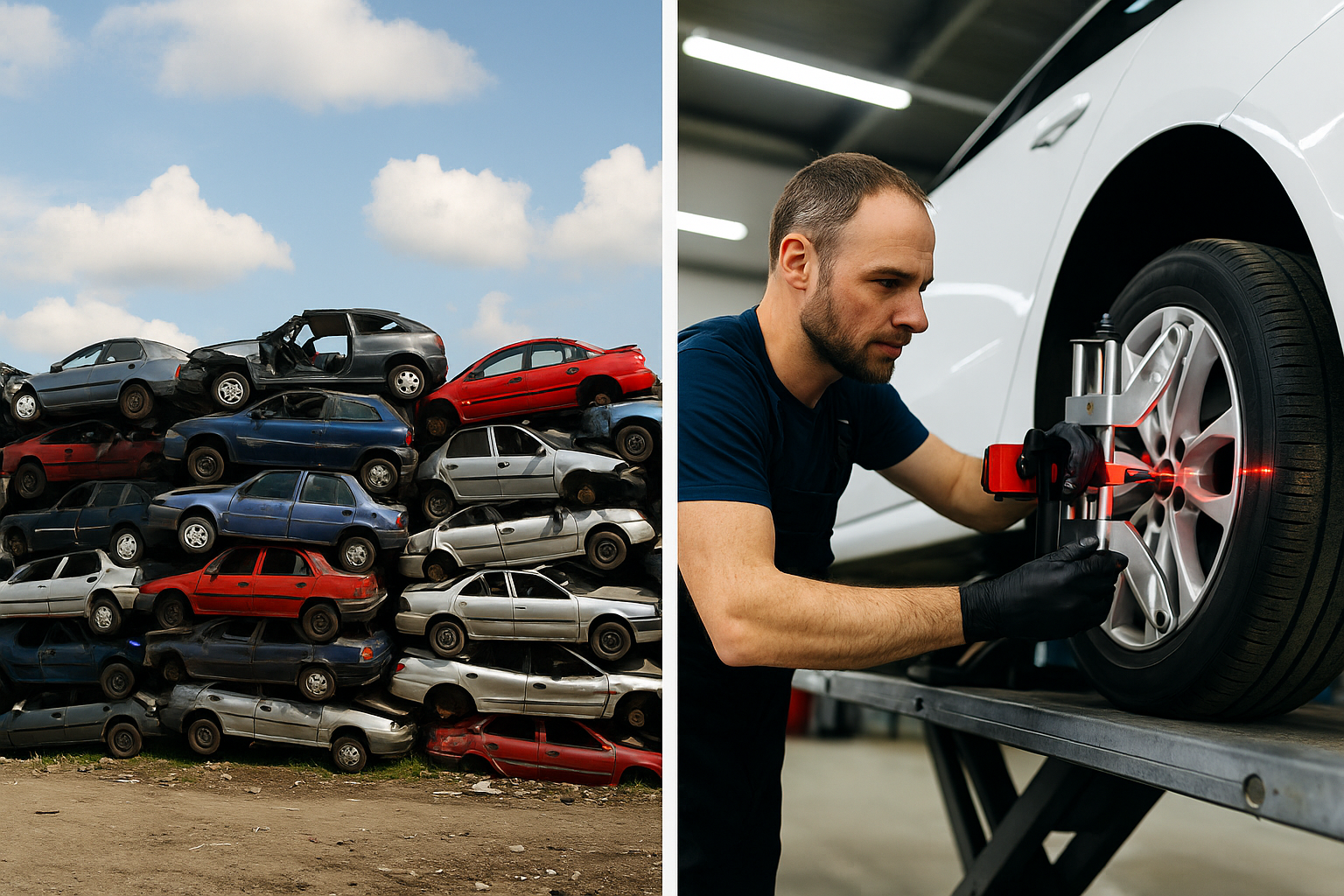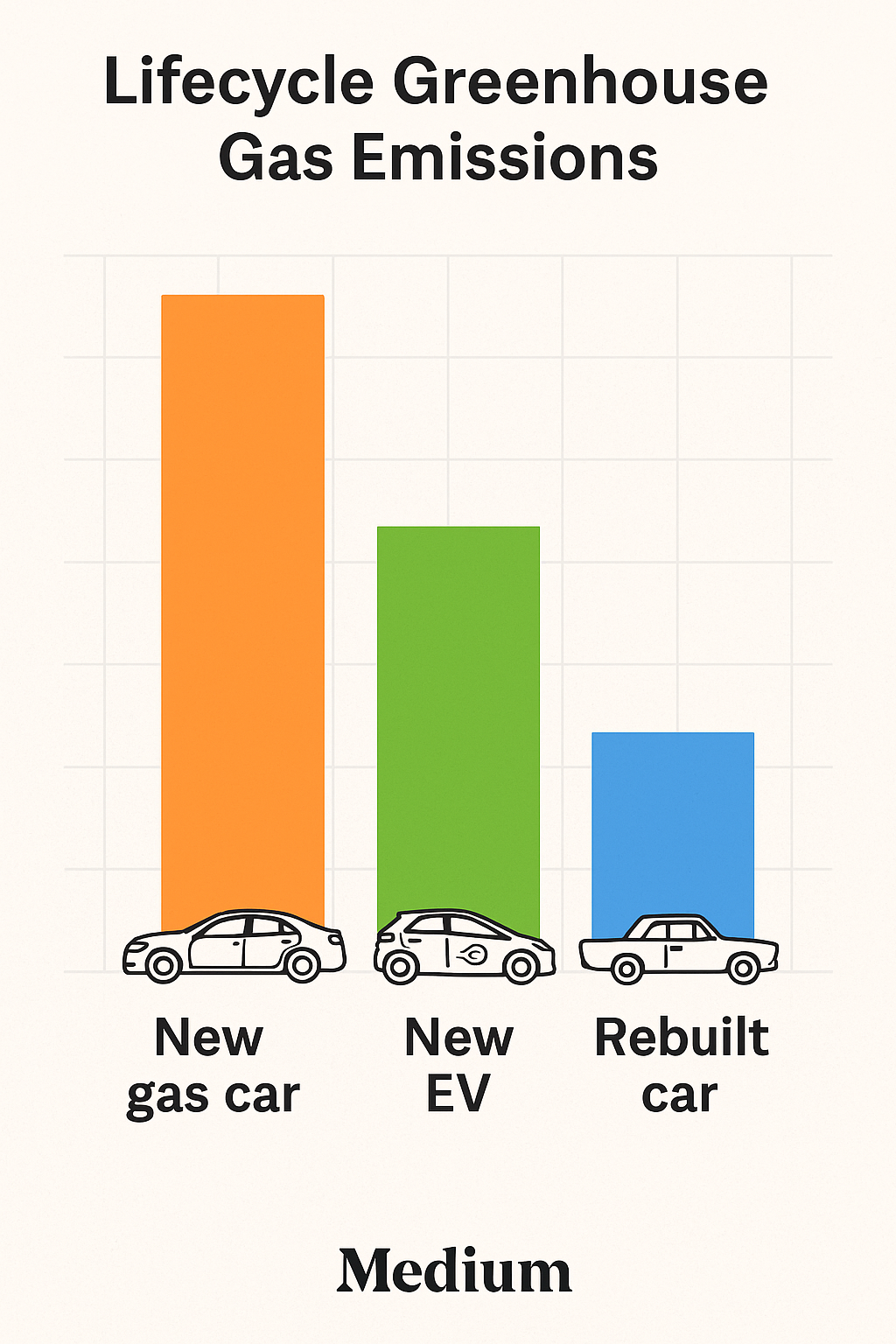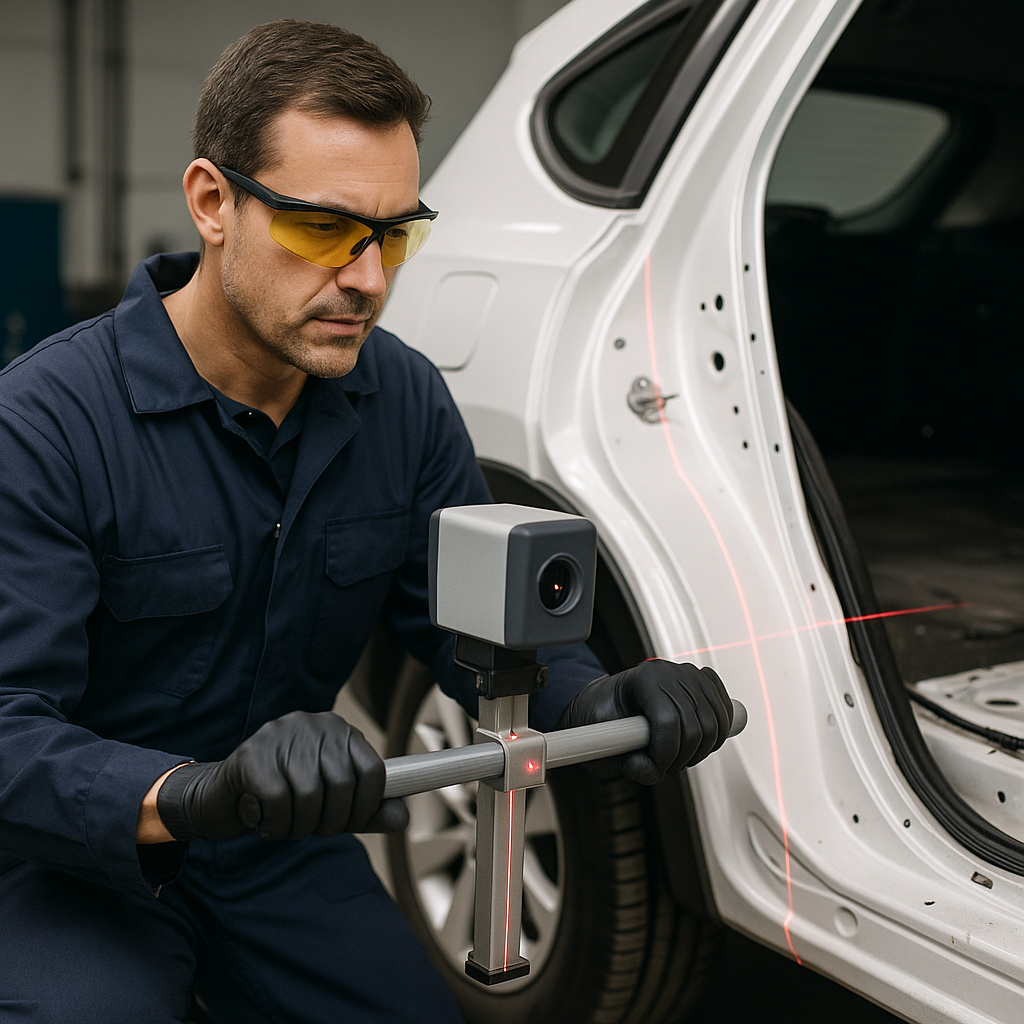
The Greenest Car Might Already Be in Your Driveway
Rebuild, Don’t Replace: The Greenest Car Might Already Be in Your Driveway
Originally published on Medium.
By Vitalii Tkachenko
Licensed Automotive Engineer | Founder of The Guaranteed Best Choice Inc. | NIADA & FIADA Member
“The greenest car isn’t the one rolling off a factory floor — it’s the one you already own, rebuilt the right way.”
🌍 The Overlooked Green Solution
When people talk about sustainable transportation, the spotlight almost always falls on electric vehicles, futuristic fuels, or high-tech factories.
But here’s the overlooked truth: restoring and rebuilding existing vehicles often cuts more emissions than manufacturing new ones.
As an automotive engineer with 20+ years of experience, I’ve seen firsthand how rebuilding slashes waste and cost — while keeping families on the road safely.

⚡ The Hidden Cost of “New”
- 30,000 kWh of energy to build one car — enough to power a U.S. home for 2+ years.
- 7–10 tons of CO₂ emissions before a new gasoline car hits the road.
- EV batteries add 2–5 extra tons of emissions at production.
- Mining steel, copper, lithium → deforestation, toxic runoff, community displacement.
All of this environmental damage happens before a new car even drives its first mile.

🔧 Why Rebuilding Wins
Professional restoration preserves most of the embedded energy already invested in the car:
- 60–90% of original materials reused.
- 75% less energy than building new.
- Millions of tons of waste prevented each year.
From a lifecycle perspective, a rebuilt car can have a smaller carbon footprint than both new gas cars and new EVs.
🛠️ What a Certified Rebuild Looks Like
Certified facilities use advanced diagnostics, frame-straightening, safety recalibration, and emissions checks. Done right, a rebuilt car is:
- Just as safe as factory-new
- Fully compliant with EPA standards
- 30–50% cheaper for families

💰 Affordability Meets Sustainability
With new cars averaging $47,000 in the U.S., millions of families are priced out.
Rebuilt cars are: Affordable, Reliable, Better for the environment.
At the same time, rebuilding sustains local economies by employing skilled technicians, inspectors, and parts suppliers.

🧱 Breaking the “Salvage” Stigma
The problem isn’t rebuilding — it’s the lack of uniform standards. Substandard repairs by unlicensed individuals fuel the “salvage stigma.”
The fix is clear: National rebuild certification; Licensed, insured facilities only; Transparency with before/after photos & documentation.
🏛️ Policy Shift We Need
If we’re serious about a circular economy, rebuilding must be part of the agenda:
1. Tax credits for certified rebuilds.
2. A green rebuild certification label.
3. Public awareness campaigns.
4. Uniform state safety inspections.
✅ Conclusion
Every new car starts life with a massive environmental debt.
By rebuilding instead of replacing, we: Slash emissions, Cut waste, Keep families mobile, Strengthen local economies.
“The greenest car of the future might not be built in a factory — it might already be sitting in your driveway.”
About the Author:
Vitalii Tkachenko is a licensed automotive engineer and founder of The Guaranteed Best Choice Inc., a Florida-based dealership specializing in sustainable, certified vehicle restoration. A member of NIADA and FIADA, he advocates for national rebuild standards and greater public awareness of sustainable mobility solutions.
- Producing one car requires over 30,000 kWh of energy (enough to power a U.S. home for more than two years), according to the International Energy Agency
- Manufacturing creates 7–10 tons of CO₂ emissions before a new gasoline car hits the road, as reported by the European Environment Agency
- EV battery production adds another 2–5 tons of CO₂, based on analysis by the International Council on Clean Transportation
- Mining steel, copper, and lithium causes deforestation and pollution, documented by the World Bank
- A quality rebuild reuses 60–90% of original materials, per the Automotive Recyclers Association and EPA
- Restoration requires less than 25% of the energy needed to build new, according to the U.S. Department of Energy
- Certified rebuilds cost 30–50% less than new vehicles, as reported by the National Independent Automobile Dealers Association
📚 Further Reading & References
• International Energy Agency (IEA): Energy Efficiency Indicators
• European Environment Agency (EEA): Greenhouse gas emissions of passenger cars
• International Council on Clean Transportation (ICCT): Life-cycle emissions of passenger cars
• World Bank: Minerals for Climate Action
• U.S. Environmental Protection Agency (EPA): Sustainable Management of Automotive Materials
• U.S. Department of Energy (DOE): Remanufacturing and Energy Savings
• National Independent Automobile Dealers Association (NIADA): Market Insights
disscuss